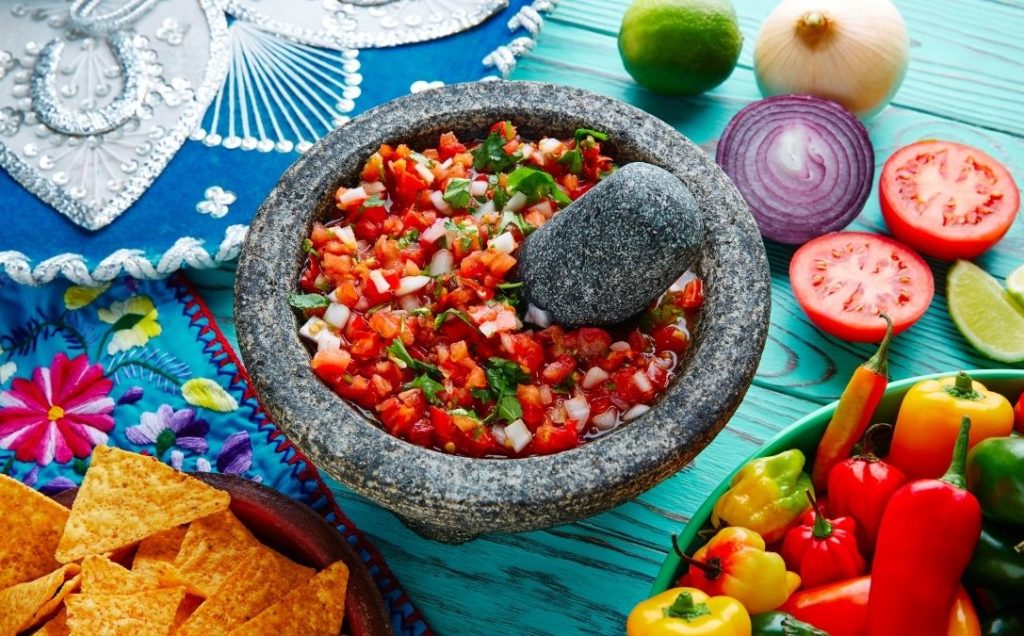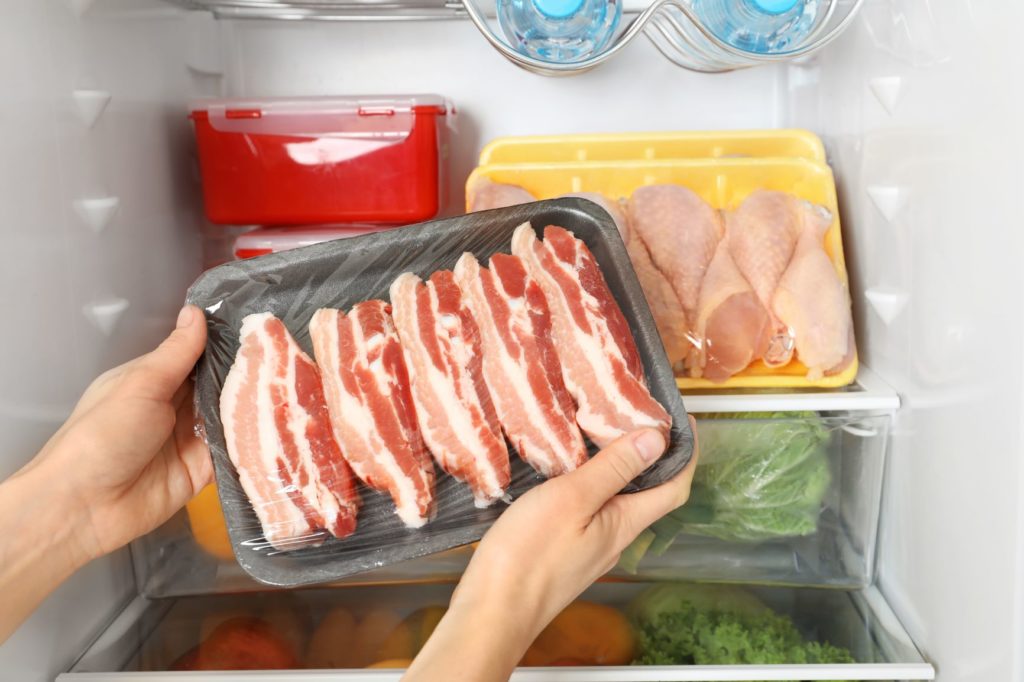Have you thought about freezing Pico de Gallo before? Or wondered if Pico de Gallo and Salsa are the same? I keep coming across the same questions on different social platforms every day and thought I should step up and answer all these questions in a single post.
Indeed Pico de Gallo is becoming more popular because of its flexibility – you can use Pico de Gallo on salsa, toppings and even fillings. Besides, making Pico de Gallo is straightforward – you don’t need to be an expert chef with tons of experience.
Pico de Gallo is healthy and a perfect one for those with health complications. They are antioxidant-rich, an antibacterial agent and can act as blood thinners. Besides, Pico de Gallo is keto and diabetes-friendly.
So can you freeze Pico de Gallo? Let’s find out.
This post may contain affiliate links. Read my disclosure policy here.
Can You Freeze Pico de Gallo?
Yes, you can freeze Pico de Gallo if you don’t like the idea of canning it. However, you need to note that your Pico de Gallo’s texture might change a bit when you freeze it.
Pico de Gallo contains cilantro and tomato liquids and this explains why it becomes slightly mushy and softer when you thaw them.
While the taste will remain delicious, the fresh quality in its texture will be gone. And because this is salsa, you shouldn’t worry much about the texture.
So how do you freeze Pico de Gallo? In three simple steps, you can freeze your Salsa cruda.
- The first step is to clear out any excess juice
- Transfer into an airtight container and put in the freezer for about three months
- Thaw in the fridge and serve accordingly

What is Pico De Gallo?
Pico de Gallo is a common type of salsa that you can make from fruits and vegetables, such as tomatoes, onions, cilantro, jalapeno peppers, garlic and lime juice.
You can blend Pico de Gallo with chicken, baked tortilla chips, fish, scrambled eggs, etc. This type of salsa has just six calories and less than 1 gram of fat, making it great for those who want to lose weight.
Pico de Gallo doesn’t comprise starchy produce with minimal quantities of calories. According to VerryWell, Pico de Gallo contains 94 grams of water for every 100 grams.
Are Pico De Gallo and Salsa the Same?
No, Pico de Gallo and salsa are not the same things. These two are made from similar ingredients but made with different concepts. Sure the two can serve the same purpose but are different.
While Pico de Gallo and salsa are a bit similar, there are differences between them. For example, people who prepare salsa prepare it for dipping.
On the other hand, Pico de Gallo is prepared to be consumed alone or served with different dishes.
Another notable difference between Pico de Gallo and salsa is that Pico de Gallo can act as a salad and you can simply chop its ingredients.
On the contrary, salsa’s ingredients are always crushed or blended and not diced. For example, tomatoes in salsa are either crushed or blended.
Salsa has quite a lot of liquid because its ingredients are blended or even diced in some cases. However, Pico de Gallo has less liquid as a result of natural juices.
Pico de Gallo is made from peppers, tomatoes and cilantro, while salsa is made from either cooked tomatoes instead of fresh or canned tomatoes.
If differentiating between salsa and Pico de Gallo has been challenging, I bet you’ll be more comfortable differentiating the two from today.
Can we now look at how you can prepare Pico de Gallo?

How to make Pico de Gallo
Ingredients
- Diced tomatoes (two cups)
- Diced yellow onion (½ cup)
- Lime, juiced (½)
- Chopped cilantro (½ cup)
- Serrano or jalapeño pepper (one)
Directions
- The first step is to dice your onions, tomatoes and cilantro. Next, wash the pepper and take out the stem, ribs, and seeds and dice as you did with the other ingredients (onions, tomatoes and cilantro). If you prefer more heat, don’t remove the seeds or the ribs, or simply add more pepper
- Combine the tomatoes and salt and then put in the mesh strainer for approximately 10 minutes. When 10 minutes have passed, remove the juices drained from the tomatoes in the process. The reason why you mixed salt and tomatoes is that you wanted to pull out extra water from the tomatoes and to help them become more concentrated
- Use a bowl to mix the pepper and lime juice, tomatoes, cilantro and onions. You are doing this so that the three vegetables can get coated with the lime and salt to make the Pico de Gallo flavor you’ve been yearning for all this while
- Leave to set for about twenty minutes. And while it might be tempting to taste, this step is crucial because it allows the flavors to mix and get the salsa taste instead of the usual ingredients’ taste. You can serve as a topping or with chips – it’s your choice, but enjoy
How to serve Pico de Gallo
Now that you have prepared your Pico de Gallo, how should you serve it? Below are some ideas you could implement and see what works best for you:
- Serve with chips or use as an appetizer with vegetables
- Serve on top of queso cheese
- Use it on top of salad or green Chile chicken
- Serve on top of the omelet
- Put it on the side with avocado
- Serve it on top of grilled chicken

How to Store Pico De Gallo
If you don’t want to freeze your Pico de Gallo, there’s an alternative – canning.
Canning is one of the recommended ways of storing Pico de Gallo besides freezing it, especially if you want to store large quantities. Just like salsa, you can work with the water bath canning, which is relatively straightforward.
So how do you store Pico de Gallo by canning? Below is a simple step-by-step process:
- Start by preparing your Pico de Gallo (please refer to the procedure I included earlier)
- The next step is to preheat the canning jars on top of hot water and I recommend that you use ½ print jars in this step
- Put your Pico de Gallo in the jars and leave about ½ inch space at the top
- Add rims and seals to the jars
- Process in the water bath for about fifteen minutes
- Allow cooling for about 24 hours
As you can see, the process is straightforward and the best alternative to freezing. Once it is canned, label the jars and store them in a cool, dry place. They should last for about twelve months.
Will Pico De Gallo Go Bad?
Pico de gallo can stay fresh in the refrigerator for up to a week. If you keep it later than a week, the tomatoes will turn mushy and the cilantro will appear wilted. While it may look unpleasant at this point, it’s still safe for consumption.
Again, you don’t have to worry about your pico de gallo going bad as it incorporates lime juice – an excellent preservative. But if you notice putrid smells from your pico or molds growing in it, be sure to dispose of it.
Related Questions
1. How Long Does Pico de Gallo Last in the Fridge?
Pico de Gallo can stay for about three to four days in the fridge. Serve using a serving fork or a slotted spoon to avoid carrying excess tomato juice into your pico. Meanwhile, keep your pico de gallo covered in the refrigerator to avoid the entry of microorganisms.
2. Can Salsa Fresca Be Frozen?
Yes, you can freeze salsa Fresca, but not indefinitely. If you must freeze your salsa, make sure to eat it within four days; otherwise, you won’t like the taste that comes with it. Using the right containers can make a difference.
3. How Long Is Fresh Made Pico de Gallo Good For?
Freshly made pico de gallo in your kitchen is good in about a week. How long your pico de gallo stays fresh will depend on your preservation measures.
Store your pico in an airtight container and use it within a week. Unsurprisingly, the flavor becomes better as it ages, so you will want to prepare this recipe for a few days to serve.
4. Is Pico de Gallo Healthy?
Yes, Pico de Gallo is healthy because it contains so many fruits in its ingredients. This salsa comes with anti-inflammatory and antibacterial properties, which help prevent hardening of your arteries, protect you against heart diseases and help fight bacteria.
5. How Do You Preserve Fresh Salsa Without Cooking It?
Freezing your Pico de Gallo makes it nearly the same as salsa. With this quick guide, I believe you now have lots of insights about Pico de Gallo – from how you can prepare, freeze and store.
You can use two methods – hot pack and fresh pack. To fresh pack means that you put your fruits and vegetables without cooking them. On the other hand, hot packing means that you cook the vegetables before they go into the jars.
Bottom Line
Besides, you now know the differences that lie between Pico de Gallo and salsa.
Over to you now; have you ever frozen Pico de Gallo and what was your experience? What did you serve your Pico de Gallo with? Please let me know your experience in the comments.







